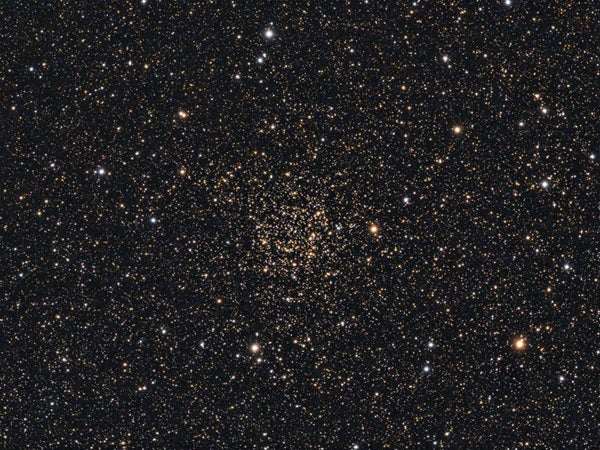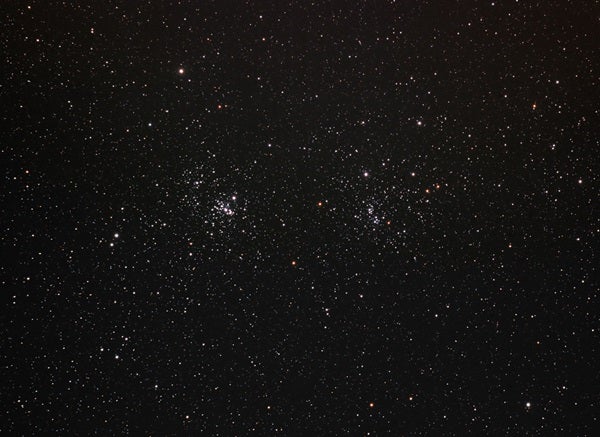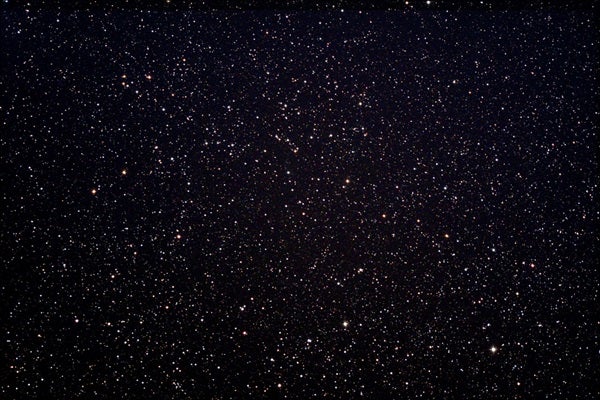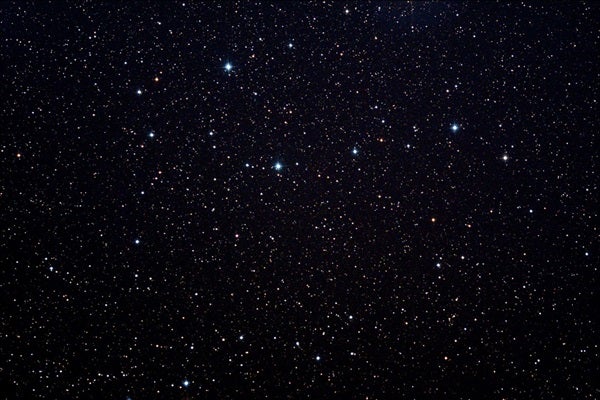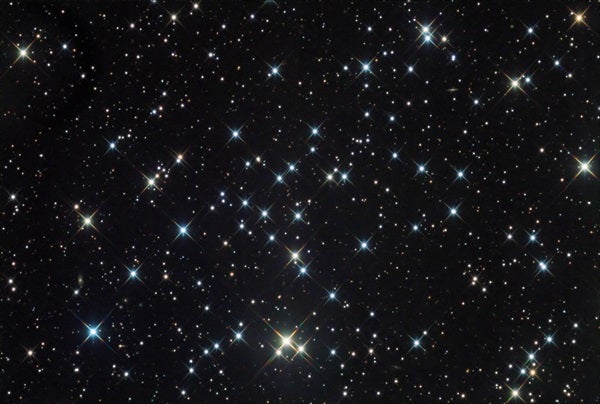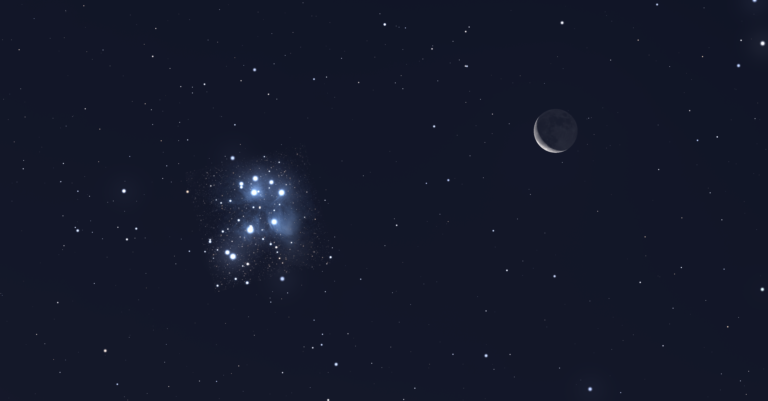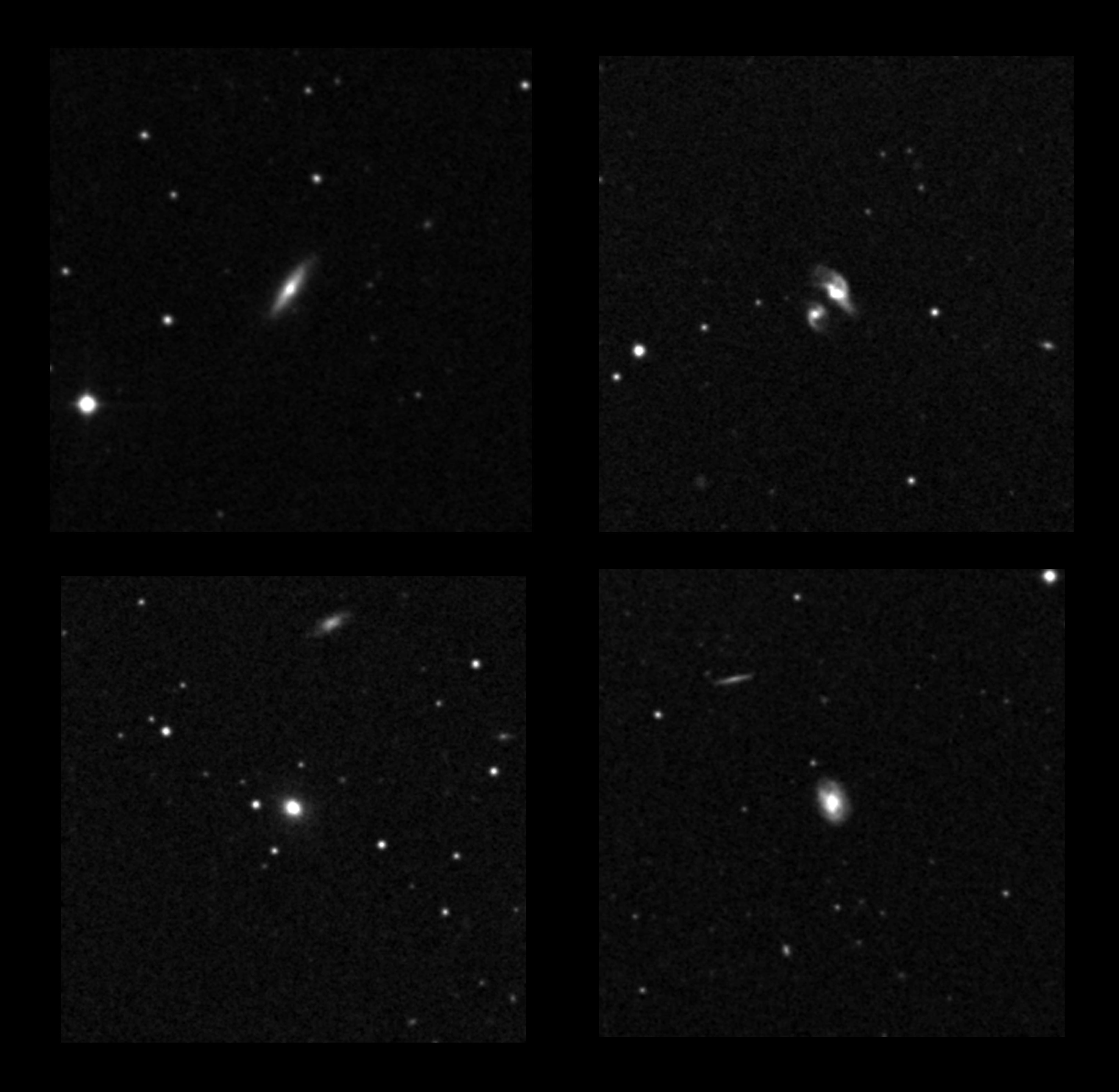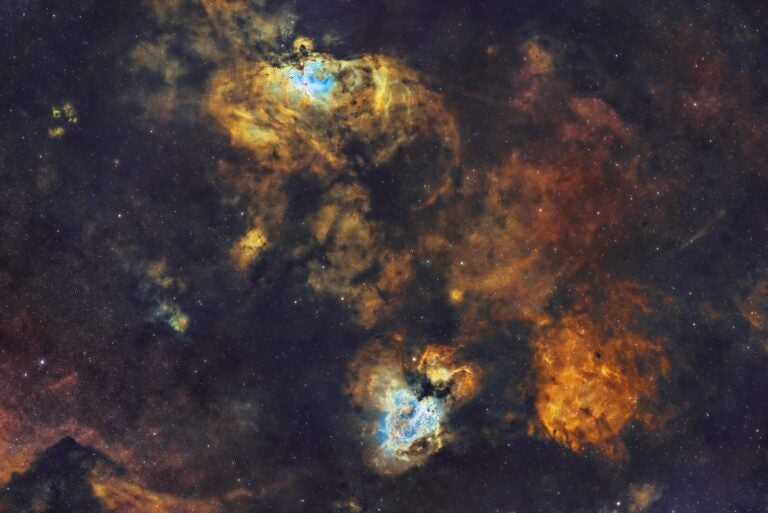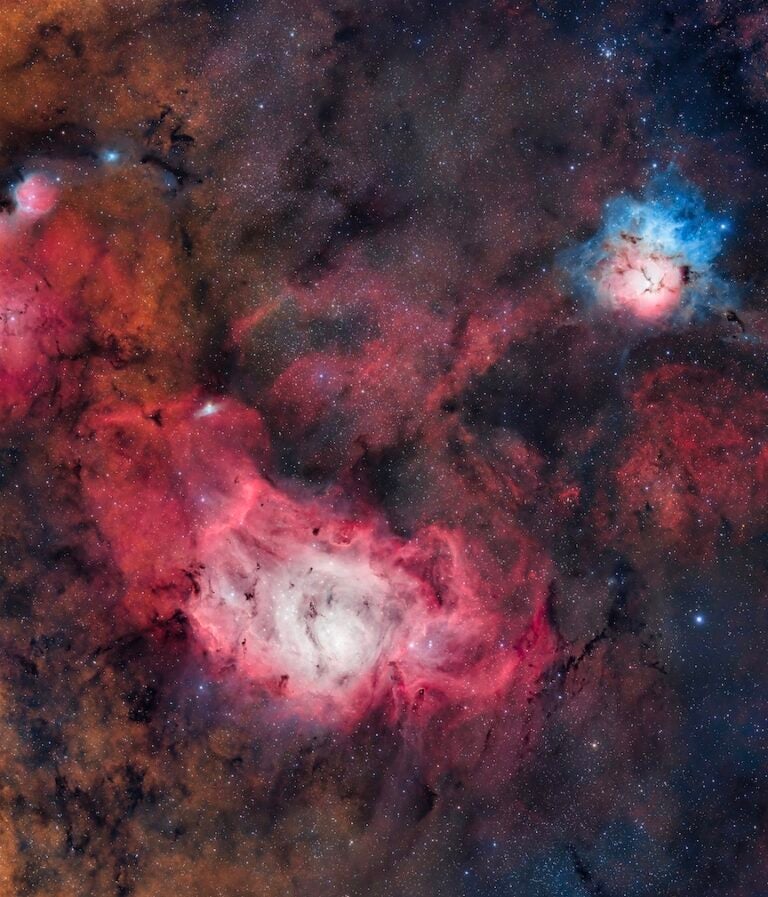With the nights getting longer and the air so crisp and clear, autumn is a great season for stargazing. The Andromeda Galaxy, the Double Cluster, and fabulous globular clusters M2 and M15 really get observers’ blood flowing. Here are 10 of my favorite autumn targets.
Awash with stars
As her majesty Cassiopeia the Queen reigns near the zenith, she offers several deep-sky subjects for our binoculars. Among the best is open cluster NGC 7789. It lies about 3° southwest of Caph (Beta [β] Cassiopeiae) at the western tip of the constellation’s W asterism. The faint mist of blurred starlight that you’ll see through binoculars is the combined glow of the cluster’s 1,000 dim stars.
As her majesty Cassiopeia the Queen reigns near the zenith, she offers several deep-sky subjects for our binoculars. Among the best is open cluster NGC 7789. It lies about 3° southwest of Caph (Beta [β] Cassiopeiae) at the western tip of the constellation’s W asterism. The faint mist of blurred starlight that you’ll see through binoculars is the combined glow of the cluster’s 1,000 dim stars.
Our first Messier object
M52 is another attractive Cassiopeia cluster. To find it, look 6° northwest of Caph. More than 200 stars form M52, but only a few are bright enough for binoculars to resolve. As you strain to see those faint points, consider that their light left the cluster more than 5,000 years ago.
M52 is another attractive Cassiopeia cluster. To find it, look 6° northwest of Caph. More than 200 stars form M52, but only a few are bright enough for binoculars to resolve. As you strain to see those faint points, consider that their light left the cluster more than 5,000 years ago.
A cluster to hoot about
The Owl Cluster (NGC 457) is the most fascinating open cluster in Cassiopeia. Lying about 9,000 light-years away, more than 80 stars call this cluster home. Several are visible through 10x binoculars. But what’s especially fun about NGC 457 is its distinctive shape. Astronomy Editor David J. Eicher gave NGC 457 its common name in 1977.
The Owl Cluster (NGC 457) is the most fascinating open cluster in Cassiopeia. Lying about 9,000 light-years away, more than 80 stars call this cluster home. Several are visible through 10x binoculars. But what’s especially fun about NGC 457 is its distinctive shape. Astronomy Editor David J. Eicher gave NGC 457 its common name in 1977.
About a dozen stars between 9th and 11th magnitude form the bird’s body, while a pair of 10th-magnitude suns marks the tail feathers. Two arcs, each containing about half a dozen suns, outline the wings. The owl’s dazzling eyes are magnitude 5.0 Phi (ϕ) Cassiopeiae and magnitude 7.0 HD 7902. Neither belongs to this open cluster, however. Instead, they lie in the foreground.
Two for the price of one
Found just across Cassiopeia’s border with Perseus, the Double Cluster (NGC 869 and NGC 884) is a preeminent target for binoculars. Even when viewed from suburban backyards, each cluster resolves through 7x binoculars into a tight knot of white stars against a star-strewn backdrop. Through higher-power giant binoculars, the view overflows, which also brings out the many red supergiant stars scattered across the region.
Found just across Cassiopeia’s border with Perseus, the Double Cluster (NGC 869 and NGC 884) is a preeminent target for binoculars. Even when viewed from suburban backyards, each cluster resolves through 7x binoculars into a tight knot of white stars against a star-strewn backdrop. Through higher-power giant binoculars, the view overflows, which also brings out the many red supergiant stars scattered across the region.
X marks the spot
Follow an arc of stars about half a binocular field of view north of the Double Cluster to a clump of faint stars that forms the letter X. That’s Stock 2, a little-known open cluster that stands out remarkably well through binoculars despite its crowded surroundings. Stock 2 is also known as the Muscleman Cluster because its stars resemble a headless stick figure flexing his muscles. His legs stretch out in two straight lines to the east, while his flexing arms curve to the west, above his long, headless neck.
Follow an arc of stars about half a binocular field of view north of the Double Cluster to a clump of faint stars that forms the letter X. That’s Stock 2, a little-known open cluster that stands out remarkably well through binoculars despite its crowded surroundings. Stock 2 is also known as the Muscleman Cluster because its stars resemble a headless stick figure flexing his muscles. His legs stretch out in two straight lines to the east, while his flexing arms curve to the west, above his long, headless neck.
Brilliant and easy
The Alpha Persei Association, also known as Melotte 20, is one of the sky’s true binocular gems. Many dazzling blue-white “diamonds” scatter throughout the area in small bunches, with magnitude 1.8 Mirfak (Alpha [α] Persei) the brightest of the horde. While most of the stars appear white or blue-white, a few show subtle tinges of yellow or orange. Studies show that the association’s stars are only about 51 million years old, younger than many of Earth’s diamonds.
The Alpha Persei Association, also known as Melotte 20, is one of the sky’s true binocular gems. Many dazzling blue-white “diamonds” scatter throughout the area in small bunches, with magnitude 1.8 Mirfak (Alpha [α] Persei) the brightest of the horde. While most of the stars appear white or blue-white, a few show subtle tinges of yellow or orange. Studies show that the association’s stars are only about 51 million years old, younger than many of Earth’s diamonds.
The great galaxy
Binoculars show the Andromeda Galaxy (M31) as a broad oval smudge of grayish light that may appear dull and featureless at first. It lies 1.3° west of magnitude 4.5 Nu (ν) Andromedae. Close inspection reveals that the galaxy extends from the northeast to the southwest for an incredible 3° — the same as six Full Moons stacked end to end. Giant binoculars will add a lane of dark nebulosity along the galaxy’s edge. And be sure to look for Andromeda’s satellite elliptical galaxies, M32 and NGC 205.
Binoculars show the Andromeda Galaxy (M31) as a broad oval smudge of grayish light that may appear dull and featureless at first. It lies 1.3° west of magnitude 4.5 Nu (ν) Andromedae. Close inspection reveals that the galaxy extends from the northeast to the southwest for an incredible 3° — the same as six Full Moons stacked end to end. Giant binoculars will add a lane of dark nebulosity along the galaxy’s edge. And be sure to look for Andromeda’s satellite elliptical galaxies, M32 and NGC 205.
Hazy luster
Look 4.8° south-southwest of magnitude 2.1 Almach (Gamma [γ] Andromedae) for open cluster NGC 752, one of the season’s largest and, at magnitude 5.7, brightest. It’s visible without optical aid from a dark site. Binoculars expose an irregular haze created from the amassed light of the cluster’s 60-some stars. Binoculars of 15x and higher magnification reveal several fainter suns that appear chain-linked across the cluster.
Look 4.8° south-southwest of magnitude 2.1 Almach (Gamma [γ] Andromedae) for open cluster NGC 752, one of the season’s largest and, at magnitude 5.7, brightest. It’s visible without optical aid from a dark site. Binoculars expose an irregular haze created from the amassed light of the cluster’s 60-some stars. Binoculars of 15x and higher magnification reveal several fainter suns that appear chain-linked across the cluster.
Southern ball of suns
M2 may be one of autumn’s brightest globular clusters, but finding it among the faint stars of Aquarius can be a problem. Begin at the Water Jar asterism of four stars just to the east of Sadalmelik (Alpha Aquarii). The Water Jar and the star form a westward-pointing arrow that leads directly to M2, which lies 8° west of Sadalmelik. Look there and you will see M2 as a fuzzy “star.” Binoculars magnifying 16x or more will show that M2 is not round, but slightly oval.
M2 may be one of autumn’s brightest globular clusters, but finding it among the faint stars of Aquarius can be a problem. Begin at the Water Jar asterism of four stars just to the east of Sadalmelik (Alpha Aquarii). The Water Jar and the star form a westward-pointing arrow that leads directly to M2, which lies 8° west of Sadalmelik. Look there and you will see M2 as a fuzzy “star.” Binoculars magnifying 16x or more will show that M2 is not round, but slightly oval.
Near the Great Square
Globular cluster M15 is easy to spot 4.2° west-northwest of Enif (Epsilon [ε] Pegasi), the star marking the nose of Pegasus the Flying Horse. A 6th-magnitude sun just to the cluster’s east creates the illusion of a double star through binoculars. Look carefully: M15 is the fuzzy one, even at low power. Most binoculars reveal it as a misty patch absent of stars, but with a brighter core.
Globular cluster M15 is easy to spot 4.2° west-northwest of Enif (Epsilon [ε] Pegasi), the star marking the nose of Pegasus the Flying Horse. A 6th-magnitude sun just to the cluster’s east creates the illusion of a double star through binoculars. Look carefully: M15 is the fuzzy one, even at low power. Most binoculars reveal it as a misty patch absent of stars, but with a brighter core.
Have another favorite autumn object? Post your observations in the Binocular forum on www.Astronomy.com/forums. And until next time, remember that two eyes are better than one.

